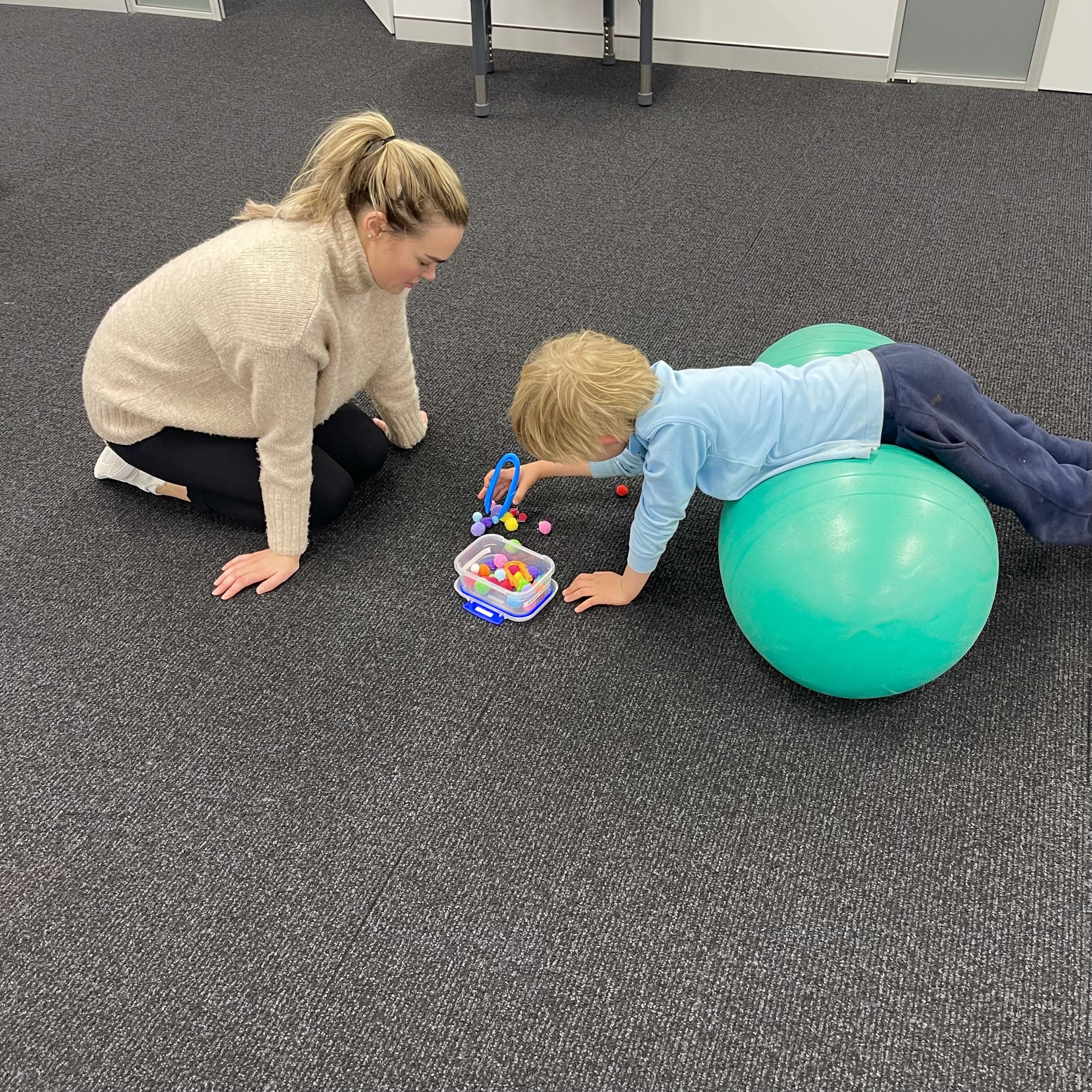
Understanding Bilateral Coordination and Its Importance in Child Development
Bilateral coordination is the ability to control and coordinate both sides of the body at the same time in a smooth and organized manner. This essential skill allows children to complete everyday tasks like cutting, tying shoelaces, and playing sports. At OneOnOne Children’s Therapy, our Occupational Therapists in Bondi Junction and Mascot work extensively on developing this crucial skill through engaging and tailored activities.
Types of Bilateral Movements
Bilateral coordination encompasses different types of movements:
- Symmetrical Movements: Both sides of the body perform the same action simultaneously, like clapping, jumping, or rolling out playdough.
- Reciprocal Movements: These involve alternating actions, such as pedalling a bike or marching, where both limbs work together but not in unison.
- Asymmetrical Movements: One side of the body plays a supporting role while the other performs more skilled tasks. This is essential for activities like writing, cutting with scissors, and kicking a ball.
Why Bilateral Coordination Matters
Developing bilateral coordination is vital for fine motor and gross motor skills. A child who struggles with this may experience difficulty with:
- Handwriting: The non-dominant hand struggles to stabilize the paper while the other writes.
- Gross motor tasks: Activities like catching a ball, climbing, or jumping may become challenging.
- Daily living skills: Dressing, tying shoelaces, and using utensils are also impacted.
Signs Your Child Might Have Bilateral Coordination Difficulties
Some common signs that your child might be struggling with bilateral coordination include:
- Difficulty with fine motor tasks such as cutting or tying shoelaces
- Challenges with gross motor tasks like catching or kicking a ball
- Trouble maintaining balance
- Clumsiness or awkward movements when engaging in activities that require both hands or legs to work together
Activities to Support Bilateral Coordination Development
Our Occupational Therapists in Bondi Junction and Mascot frequently use a variety of fun, engaging activities to strengthen bilateral coordination skills:
- Clapping games like popping bubbles
- Threading and beading activities
- Cutting practice with safety scissors
- Playdough manipulation using tools
- Playing musical instruments like drums
- Building with Lego or other block-based toys
- Ball skills, such as dribbling or catching, to enhance hand-eye coordination
How Occupational Therapy Can Help
At OneOnOne Children’s Therapy, our Occupational Therapists specialise in helping children with coordination challenges. We tailor therapy plans that focus on building bilateral coordination, whether through play-based interventions or specific skill-building exercises. Our goal is to make these activities enjoyable and stress-free while fostering your child’s growth.
When to Seek Help
If you’re concerned that your child isn’t developing bilateral coordination as expected, it may be time to consult an Occupational Therapist. Early intervention can make a significant difference in helping your child develop the necessary skills for everyday tasks and improve their overall coordination.
We’re Here to Support You
At OneOnOne Children’s Therapy, we believe that every child deserves the chance to grow and thrive. Our clinics in Bondi Junction and Mascot are designed to provide a welcoming space for therapy. With a holistic approach to paediatric occupational therapy, we offer tailored interventions to meet each child’s unique needs.
Reach Out for Support
If you’re concerned about your child’s bilateral coordination or want to learn more about how Occupational Therapy can help, our team at OneOnOne Children’s Therapy is here to assist. Call our Bondi Junction or Mascot clinics on (02) 80657837 or email us to schedule a consultation. You can also book a free 30-minute phone call to discuss how we can support your child’s development.
Our AHPRA-registered Occupational Therapists are ready to help your child on their unique journey toward independence and success.
We are a dedicated team of Speech Pathologists, Occupational Therapists, Certified ESDM Therapists, and Psychologists, serving families in Bondi Junction and Mascot, Sydney’s Eastern suburbs. Our clinics are tailored to provide exceptional intervention for children with autism, developmental delays, disabilities, and learning difficulties, ensuring they receive the best possible care and support.
